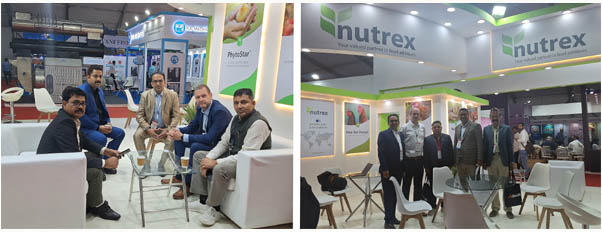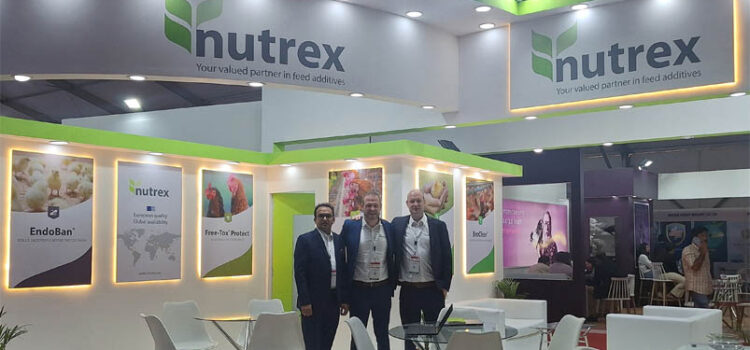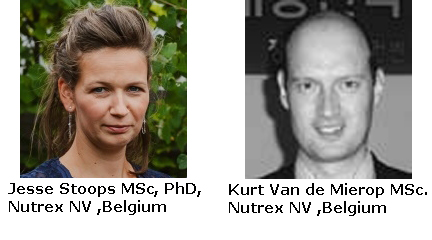Poultry India 2023 was a great success for Nutrex, and we couldn’t be more proud of our team. It was an amazing few days, and we want to extend a huge thank you to everyone who stopped by our booth to learn more about our company & range of solutions.
 Nutrex’s Key Highlights at Poultry India 2023
Nutrex’s Key Highlights at Poultry India 2023
- Showcased innovative products: Nutrex showcased its innovative range of feed additives that are designed to improve animal health, performance, and well-being. Including its new range of gut health solutions, such as EndoBan, PhytoStar, Free-Tox and Nutrase BXP. These products are designed to help producers maintain healthy gut flora in their animals, which is essential for optimal nutrient absorption and immune function.
- Intensive networking : we had the opportunity to meet with customers and partners from all over South Asia at the event, allowing us to discuss our latest products, and to learn more about our customer’s needs.
Nutrex’s Commitment to the Poultry Industry
Nutrex is committed to providing the poultry industry with the highest quality feed additives. We are constantly innovating to develop new products that can help poultry producers improve the health, performance, and well-being of their poultry.

Nutrex’s Impact on the Poultry Industry
Nutrex’s products have a significant impact on the poultry industry. Our feed additives are meticulously formulated to optimize nutrient absorption and utilization, promoting healthier, more productive poultry. This translates into improved meat and egg quality, reduced feed consumption, and a diminished environmental footprint.
Conclusion
Our team of experts provides technical support and guidance to farmers and feed producers worldwide, ensuring that they have the knowledge and resources necessary to optimize animal health, performance, and profitability.
Overall, Nutrex’s participation at Poultry India 2023 was a success. Nutrex was able to showcase its innovative products, meet with customers and partners, and reaffirm its commitment to the poultry industry.
Contact us for more information:
Mr Kurt Van de Mierop (Managing Director)
Mr Geert Van de Mierop (Managing Director)
Dr. Amit Kumar Patra (Technical Sales Manager-SOUTH ASIA) Amit.Patra@nutrex.eu
Nutrex
Hoogbuul 24 • 2250 Olen• Belgium
+32 (0)14 88 31 11
www.nutrex.eu • info@nutrex.eu
https://www.linkedin.com/company/nutrex







